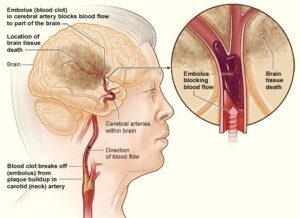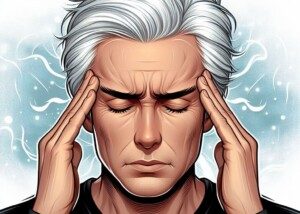
The risk of stroke seems to differ depending on type of transient ischemic attack symptoms a person experiences.
A transient ischemic attack (TIA) is a mini stroke, when a clot forms in a blood vessel in the brain, temporarily cutting off blood (and thus oxygen) to the portion of the brain that the vessel feeds.
Which portion of the brain suffers this event determines the nature of the symptoms; the nature of the TIA.
TIA symptoms vary as much as brain function does, according to Ivan Mikolaenko, MD, a board certified neurologist of 20+ years based in New York with subspecialty certification in neurocritical care.
TIA symptoms are classified as either “soft” or “hard.”
Typical warning information regarding a transient ischemic attack states that one-third of people, who experience this event, will suffer a stroke within 12 months.
This is a general figure that does not take into account type of symptom.
For instance, what percentage of people, whose TIA(s) consisted of only dizziness and double vision, will go on to have a stroke within 12 months?
And what percentage of people, who have a transient ischemic attack consisting of slurred speech or one-sided weakness or paralysis, eventually will have a stroke within 12 months?
When type of TIA symptom is considered, these percentages will change.
The average is 30 percent when all the symptoms — any TIA — are taken into account.
Dr. Mikolaenko explains, “From my experience I see plenty of elderly patients with many TIAs in the past and no stroke, not even old strokes on MRI imaging.
“I always ask myself: Are these people, with multiple admissions for ‘soft’ stroke symptoms, will they ever have a stroke if they live long enough, or [is it that] secondary prevention medication which they are on keeps them away from developing a full-blown stroke?”
Secondary medication consists of blood thinners, which may include a daily aspirin.
Dr. Mikolaenko says the following are soft symptoms of a transient ischemic attack:
- Hemiparesthesias [one-sided numbness/tingling]
- Dizziness/vertigo/lightheadedness
- Blurry vision
- Short lasting diplopia (double vision)
- Confusion
- Neck pain (cervicalgia)
- Unilateral limb pain/heaviness/discomfort
- Very short lasting memory loss.
NOTE: The pain, heaviness and discomfort here do not refer to weakness, which is a hard symptom.
Dr. Mikolaenko says, “‘Hard’ symptoms of TIAs are: aphasia (expressive or comprehensive, or mixed), hemiparesis ( one-sided weakness) or hemiplegia, monocular painless blindness.” Aphasia refers to speaking difficulties.
If all you’ve experienced are the soft symptoms of TIA, this doesn’t mean brush them aside and assume you’ll never have a stroke.
You are still at increased risk of a stroke; transient ischemic attacks mean that something is seriously wrong with the blood circulation that leads to, or that’s in, your brain.

National Heart Lung and Blood Insitute
Soft TIA symptoms that occur while you’re driving, operating machinery, walking down stairs, etc., can result in a fatal accident.










































